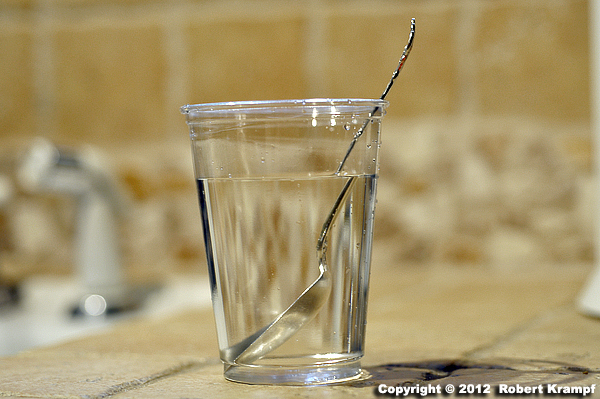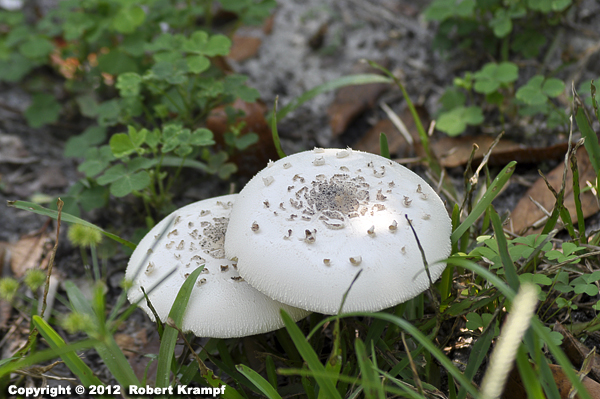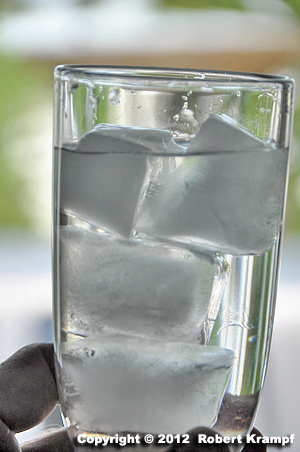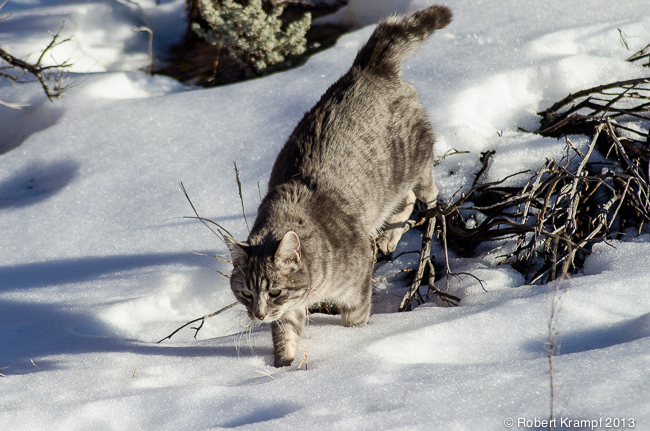Here are some science questions to help you test your general science knowledge. They will also show you which of the Florida, Utah, and NGSS science standards each question is testing.
The questions are chosen randomly, so this quest will be different each time.
Get 5 more random questions.
Would you rather see the most recently added questions?

Which of the following is a major characteristic of hurricanes?
-
Low barometric pressure
Yes. Hurricanes always have very low barometric pressure. -
High barometric pressure
No. Hurricanes always have very low barometric pressure. -
Winds blowing towards the shore.
No. The direction of the winds depends on the location of the storm, relative to the shore. Depending on location, hurricane winds can blow towards shore, away for shore, or parallel to the shore. -
Winds blowing away from the shore.
No. The direction of the winds depends on the location of the storm, relative to the shore. Depending on location, hurricane winds can blow towards shore, away for shore, or parallel to the shore.
Click to see which state standards this question tests, and which of my videos, experiments, and other resources support that topic.
Florida
SC.5.E.7.3 Recognize how air temperature, barometric pressure, humidity, wind speed and direction, and precipitation determine the weather in a particular place and time.
| Nephoscope | video, checked |
| Building a Rain Gauge, part 2 | video, checked |
| Building a Rain Gauge, part 1 | video, checked |
| Pine Cone Weather | text page, free |
| Review Weather-4 | practice |
| Review Weather-5 | practice |
Utah
UT.4.II.1.d Compare the components of severe weather phenomena to normal weather conditions (e.g., thunderstorm with lightning and high winds compared to rainstorm with rain showers and breezes).
| Review Weather-5 | practice |
NGSS
3-ESS2-1 Represent data in tables and graphical displays to describe typical weather conditions expected during a particular season.
| Nephoscope | video, checked |
| Pine Cone Weather | text page, free |
| Review Space-8 | practice |
| Review Weather-5 | practice |
| Review Weather-6 | practice |
| Review Weather-4 | practice |
| Review Weather-3 | practice |
| Review Space-5 | practice |
MS-ESS3-2 Analyze and interpret data on natural hazards to forecast future catastrophic events and inform the development of technologies to mitigate their effects.
| Review Weather-5 | practice |

While this spoon appears to have a broken handle, it is just the result of how the water affects the light. This is an example of:
-
Refraction
Yes! Refraction bends light as it moves from one substance to another. As the light passes from the water to the air, its path is changed, making it appear that the spoon is broken. -
Reflection
No. While some light is reflected from the glass, it is not responsible for the bending of the light. -
Absorption
No. The water and glass are both clear, telling us that very little of the light is being absorbed. Absorption does not bend the light. -
Diffusion
No. Diffusion is the scattering of light as it is reflected in many different directions. Diffusion would make the image cloudy and blurry.
Click to see which state standards this question tests, and which of my videos, experiments, and other resources support that topic.
Florida
SC.3.P.10.3 Demonstrate that light travels in a straight line until it strikes an object or travels from one medium to another.
| Sunglass Science: Polarized Light | video, free, Updated |
| Mirage | video, free, ClosedCaptions, Updated |
| Pinhole Eyeglasses | video, checked |
| Why Wet Things Turn Dark | video, checked |
| Growing Crystals Under the Microscope | video, free, learnalong, checked |
| Changing the Speed of Light | video |
| Why is Foam White? | video, checked |
| Microscopes: Growing Crystals | video, free, learnalong, Updated |
| Sunglass Science: Birefringence | video, free, Updated |
| A Long Lens | text page |
| Review Light-1 | practice |
| Review Light-2 | practice |
| Review Light-3 | practice |
| Review Light-4 | practice |
| Review Light-5 | practice |
SC.3.P.10.4 Demonstrate that light can be reflected, refracted, and absorbed.
| Sunglass Science: Polarized Light | video, free, Updated |
| Mirage | video, free, ClosedCaptions, Updated |
| Pinhole Eyeglasses | video, checked |
| Looking for Rainbows | video |
| Why Wet Things Turn Dark | video, checked |
| Growing Crystals Under the Microscope | video, free, learnalong, checked |
| Changing the Speed of Light | video |
| Why is Foam White? | video, checked |
| Onion Crystals | video |
| Microscopes: Growing Crystals | video, free, learnalong, Updated |
| Sunglass Science: Birefringence | video, free, Updated |
| A Long Lens | text page |
| Sunlight, Energy, and Crayons | text page, free |
| Review Light-1 | practice |
| Review Light-2 | practice |
| Review Light-3 | practice |
| Review Light-4 | practice |
| Review Light-5 | practice |
SC.7.P.10.2 Observe and explain that light can be reflected, refracted, and/or absorbed.
| Sunglass Science: Birefringence | video, free, Updated |
| Sunglass Science: Polarized Light | video, free, Updated |
| Mirage | video, free, ClosedCaptions, Updated |
| Pinhole Eyeglasses | video, checked |
| Why Wet Things Turn Dark | video, checked |
| Growing Crystals Under the Microscope | video, free, learnalong, checked |
| Finding Fat in Foods | video, ClosedCaptions, checked |
| Changing the Speed of Light | video |
| Onion Crystals | video |
| Why is Foam White? | video, checked |
| Microscopes: Growing Crystals | video, free, learnalong, Updated |
| A Long Lens | text page |
| Sunlight, Energy, and Crayons | text page, free |
| Review Light-1 | practice |
| Review Light-2 | practice |
| Review Light-3 | practice |
| Review Light-4 | practice |
| Review Light-5 | practice |
Utah
UT.8.IV.1.b Compare the transfer of energy (i.e., sound, light, earthquake waves, heat) through various mediums.
| Sunglass Science: Polarized Light | video, free, Updated |
| Noisy String | video, checked |
| Mirage | video, free, ClosedCaptions, Updated |
| About Microwaves | video, checked |
| Microwave Chocolate | video, checked |
| Spoon Bells | video, checked |
| The Singing Glass | video, checked |
| Why Wet Things Turn Dark | video, checked |
| The Science of Pizza | video, checked |
| Heating a Balloon | video, ClosedCaptions, checked |
| Changing the Speed of Light | video |
| Doppler Effect | video, checked |
| Solar Power | video, checked |
| Sunglass Science: Birefringence | video, free, Updated |
| Comparing How Sound Moves Through Liquids and Gases | text page |
| Review Light-1 | practice |
| Review Light-2 | practice |
| Review Light-4 | practice |
| Review Light-5 | practice |
NGSS
1-PS4-3 Plan and conduct an investigation to determine the effect of placing objects made with different materials in the path of a beam of light.
| Sunglass Science: Polarized Light | video, free, Updated |
| Mirage | video, free, ClosedCaptions, Updated |
| A Color You Can't See | video, free, checked |
| Pinhole Eyeglasses | video, checked |
| Why Wet Things Turn Dark | video, checked |
| Growing Crystals Under the Microscope | video, free, learnalong, checked |
| Sunprints | video |
| Changing the Speed of Light | video |
| Why is Foam White? | video, checked |
| Onion Crystals | video |
| Microscopes: Growing Crystals | video, free, learnalong, Updated |
| Sunglass Science: Birefringence | video, free, Updated |
| A Long Lens | text page |
| Review Light-1 | practice |
| Review Light-2 | practice |
| Review Light-3 | practice |
| Review Light-4 | practice |
| Review Light-5 | practice |
MS-PS4-2 Develop and use a model to describe that waves are reflected, absorbed, or transmitted through various materials.
| Sunglass Science: Polarized Light | video, free, Updated |
| Mirage | video, free, ClosedCaptions, Updated |
| About Microwaves | video, checked |
| Microwave Chocolate | video, checked |
| Why Wet Things Turn Dark | video, checked |
| Onion Crystals | video |
| Sunprints | video |
| Finding Fat in Foods | video, ClosedCaptions, checked |
| Changing the Speed of Light | video |
| Why is Foam White? | video, checked |
| Sunglass Science: Birefringence | video, free, Updated |
| A Long Lens | text page |
| Sunlight, Energy, and Crayons | text page, free |
| Review Light-1 | practice |
| Review Light-2 | practice |
| Review Light-4 | practice |
| Review Light-5 | practice |

Which part of the food web does this mushroom fit into?
-
Producer.
No. A producer captures energy from sunlight, and stores it as food. To do that, the organism needs to contain chlorophyll. This mushroom cannot use the energy of sunlight to produce its own food. -
Primary Consumer.
No. Primary consumers eat producers. This mushroom does not eat living plants. -
Secondary Consumer
No. Secondary consumers eat other consumers. This mushroom does not eat living animals. -
Decomposer
Yes! Decomposers break down dead and decaying organisms. This mushroom gets its energy from decaying organisms in the soil.
Click to see which state standards this question tests, and which of my videos, experiments, and other resources support that topic.
Florida
SC.4.L.17.3 Trace the flow of energy from the Sun as it is transferred along the food chain through the producers to the consumers.
| Scavengers and Decomposers | video, free, ClosedCaptions, Updated |
| Secondary Consumers | video, free, ClosedCaptions, Updated, checked |
| Producers | video, free, Updated, checked |
| Primary Consumers | video, ClosedCaptions, Updated, checked |
| Food Web Tag | text page |
| What is a Food Web? | text page, free, checked |
| Review Food Web-9 | practice |
| Review Food Web-10 | practice |
| Review Food Web-2 | practice |
| Review Food Web-1 | practice |
| Review Food Web-3 | practice |
| Review Food Web-4 | practice |
| Review Food Web-5 | practice |
| Review Food Web-6 | practice |
| Review Food Web-7 | practice |
| Review Food Web-8 | practice |
SC.7.L.17.1 Explain and illustrate the roles of and relationships among producers, consumers, and decomposers in the process of energy transfer in a food web.
| Scavengers and Decomposers | video, free, ClosedCaptions, Updated |
| Secondary Consumers | video, free, ClosedCaptions, Updated, checked |
| Producers | video, free, Updated, checked |
| Primary Consumers | video, ClosedCaptions, Updated, checked |
| Measuring Calories | video, ClosedCaptions, checked |
| Food Web Tag | text page |
| What is a Food Web? | text page, free, checked |
| Review Food Web-6 | practice |
| Review Food Web-7 | practice |
| Review Food Web-8 | practice |
| Review Food Web-9 | practice |
| Review Food Web-10 | practice |
| Review Food Web-2 | practice |
| Review Food Web-1 | practice |
| Review Food Web-3 | practice |
| Review Food Web-4 | practice |
| Review Food Web-5 | practice |
Utah
UT.8.II.2.a Categorize the relationships between organisms (i.e., producer/consumer/decomposer, predator/prey, mutualism/parasitism) and provide examples of each.
| Secondary Consumers | video, free, ClosedCaptions, Updated, checked |
| Producers | video, free, Updated, checked |
| Primary Consumers | video, ClosedCaptions, Updated, checked |
| What is a Food Web? | text page, free, checked |
| Review Food Web-2 | practice |
| Review Food Web-1 | practice |
| Review Food Web-3 | practice |
| Review Food Web-4 | practice |
| Review Food Web-5 | practice |
| Review Food Web-6 | practice |
| Review Food Web-7 | practice |
| Review Food Web-8 | practice |
| Review Food Web-9 | practice |
| Review Food Web-10 | practice |
| Review Food Web-11 | practice |
| Review Food Web-12 | practice |
NGSS
5-PS3-1 Use models to describe that energy in animals’ food (used for body repair, growth, motion, and to maintain body warmth) was once energy from the sun.
| Scavengers and Decomposers | video, free, ClosedCaptions, Updated |
| Secondary Consumers | video, free, ClosedCaptions, Updated, checked |
| Producers | video, free, Updated, checked |
| Measuring Photosynthesis | video, checked |
| Primary Consumers | video, ClosedCaptions, Updated, checked |
| Measuring Calories | video, ClosedCaptions, checked |
| Calories: Measuring the Energy | text page, free |
| What is a Food Web? | text page, free, checked |
| Review Food Web-3 | practice |
| Review Food Web-4 | practice |
| Review Food Web-5 | practice |
| Review Food Web-6 | practice |
| Review Food Web-7 | practice |
| Review Food Web-8 | practice |
| Review Food Web-9 | practice |
| Review Food Web-10 | practice |
| Review Food Web-2 | practice |
| Review Food Web-1 | practice |
5-LS2-1 Develop a model to describe the movement of matter among plants, animals, decomposers, and the environment.
| Scavengers and Decomposers | video, free, ClosedCaptions, Updated |
| Secondary Consumers | video, free, ClosedCaptions, Updated, checked |
| Producers | video, free, Updated, checked |
| Primary Consumers | video, ClosedCaptions, Updated, checked |
| What is a Food Web? | text page, free, checked |
| Review Food Web-10 | practice |
| Review Food Web-2 | practice |
| Review Food Web-1 | practice |
| Review Food Web-3 | practice |
| Review Food Web-4 | practice |
| Review Food Web-5 | practice |
| Review Food Web-6 | practice |
| Review Food Web-7 | practice |
| Review Food Web-8 | practice |
| Review Food Web-9 | practice |

When water freezes, it:
-
Condenses
No. Condensation happens when water vapor changes from a gas to a liquid. -
Contracts
No. Water does not take up less space when it freezes. -
Expands
Yes! Unlike most substances, water expands to take up more space when it freezes. -
Gains mass.
No. Changing from one state to another does not cause a change in mass.
Click to see which state standards this question tests, and which of my videos, experiments, and other resources support that topic.
Florida
SC.3.P.9.1 Describe the changes water undergoes when it changes state through heating and cooling by using familiar scientific terms such as melting, freezing, boiling, evaporation, and condensation.
| Ice Cream Science | video, checked |
| Cloud Formation, part 1 | video, ClosedCaptions, checked |
| The Water Cycle | video, checked |
| A Model of the Water Cycle | video, ClosedCaptions, checked |
| Cloud Formation, part 2 | video |
| Making a Solar Still | video |
| Wonderful Water | video, checked |
| A Watched Pot | video |
| Why We Sweat | video, checked |
| Photographing Snowflakes | video, checked |
| What Really Happens With Evaporation? | text page, free, checked |
| Review Weather-1 | practice |
| Review Weather-2 | practice |
| Review Weather-10 | practice |
SC.4.P.8.2 Identify properties and common uses of water in each of its states.
| Wonderful Water | video, checked |
| A Watched Pot | video |
| Wax and Wood, part 1 | video, checked |
| Wax and Wood, part 2 | video, checked |
| Photographing Snowflakes | video, checked |
| Ice Cream Science | video, checked |
| 75% Water | video, checked |
| Crushed Can | video, checked |
| A Boat Full of Holes | video, checked |
| A Bouncing Water Balloon | video |
| Cloud Types | video |
| Making a Solar Still | video |
| Water on a String | video, blog, ClosedCaptions |
| Adding to a Full Cup | text page |
| What Really Happens With Evaporation? | text page, free, checked |
| A Clean Trick | text page |
| Review Weather-8 | practice |
| Review Weather-10 | practice |
SC.5.E.7.1 Create a model to explain the parts of the water cycle. Water can be a gas, a liquid, or a solid and can go back and forth from one state to another.
>>> Teacher Page: Water Cycle
| Cloud Formation, part 2 | video |
| Cloud Types | video |
| Making a Solar Still | video |
| A Watched Pot | video |
| Photographing Snowflakes | video, checked |
| The Water Cycle | video, checked |
| A Model of the Water Cycle | video, ClosedCaptions, checked |
| Review Weather-1 | practice |
| Review Weather-2 | practice |
| Review Weather-8 | practice |
| Review Weather-10 | practice |
SC.5.P.8.1 Compare and contrast the basic properties of solids, liquids, and gases, such as mass, volume, color, texture, and temperature.
>>> Teacher Page: States of Matter
| Ice Cream Science | video, checked |
| Raw Egg or Boiled? | video, checked |
| Air Space | video |
| A Bouncing Water Balloon | video |
| Egg States | video, checked |
| Experimenting with Dry Ice | video, free, checked |
| Wax and Wood, part 1 | video, checked |
| Wax and Wood, part 2 | video, checked |
| Air has Weight | text page |
| Teach It Right the First Time. | text page, free |
| Review Matter-2 | practice |
| Review Matter-1 | practice |
| Review Matter-3 | practice |
| Review Weather-10 | practice |
SC.6.E.7.2 Investigate and apply how the cycling of water between the atmosphere and hydrosphere has an effect on weather patterns and climate.
| Cloud Types | video |
| Nephoscope | video, checked |
| The Water Cycle | video, checked |
| Weather and Climate | video |
| Pine Cone Weather | text page, free |
| Review Weather-9 | practice |
| Review Weather-10 | practice |
| Review Weather-8 | practice |
Utah
UT.4.I.2.b Describe the processes of evaporation, condensation, and precipitation as they relate to the water cycle.
| The Water Cycle | video, checked |
| A Model of the Water Cycle | video, ClosedCaptions, checked |
| Making a Solar Still | video |
| Wonderful Water | video, checked |
| A Watched Pot | video |
| Photographing Snowflakes | video, checked |
| Cloud Formation, part 1 | video, ClosedCaptions, checked |
| A Cool Experiment | text page |
| What Really Happens With Evaporation? | text page, free, checked |
| Review Weather-8 | practice |
| Review Weather-10 | practice |
UT.4.I.2.c Identify locations that hold water as it passes through the water cycle (e.g., oceans, atmosphere, fresh surface water, snow, ice, and ground water).
| Photographing Snowflakes | video, checked |
| A Model of the Water Cycle | video, ClosedCaptions, checked |
| 75% Water | video, checked |
| Review Weather-8 | practice |
| Review Weather-10 | practice |
NGSS
MS-ESS2-4 Develop a model to describe the cycling of water through Earth’s systems driven by energy from the sun and the force of gravity.
| A Model of the Water Cycle | video, ClosedCaptions, checked |
| Cloud Formation, part 2 | video |
| Making a Solar Still | video |
| Wonderful Water | video, checked |
| Cloud Formation, part 1 | video, ClosedCaptions, checked |
| The Water Cycle | video, checked |
| Review Weather-8 | practice |
| Review Weather-10 | practice |

This snow fell when the temperature outside was 39°F. How can you get snow when the temperature is above freezing?
-
The wind made it feel colder, allowing it to snow.
No. While wind chill can make it feel colder, it does not actually make it colder. -
It was colder in the clouds where the snow formed.
Yes. Even when air temperatures at the surface are above freezing, the clouds can be much colder. If the air at the surface is not too warm, the snow can reach the ground without melting. -
Rain froze into snow when it hit the ground.
No. Freezing rain forms ice, not snow. Light, fluffy snow flakes form as they fall through the air, not after they hit the ground. -
This is really hail instead of snow.
No. Hail is made of large chunks of ice, not tiny flakes.
Click to see which state standards this question tests, and which of my videos, experiments, and other resources support that topic.
Florida
SC.5.E.7.4 Distinguish among the various forms of precipitation (rain, snow, sleet, and hail), making connections to the weather in a particular place and time.
| Photographing Snowflakes | video, checked |
| Building a Rain Gauge, part 2 | video, checked |
| Building a Rain Gauge, part 1 | video, checked |
| Snow Rollers | text page |
| Review Weather-6 | practice |
| Review Weather-3 | practice |
SC.6.E.7.3 Describe how global patterns such as the jet stream and ocean currents influence local weather in measurable terms such as temperature, air pressure, wind direction and speed, and humidity and precipitation.
| Nephoscope | video, checked |
| Review Weather-6 | practice |
Utah
UT.4.II.2.a Observe and record effects of air temperature on precipitation (e.g., below freezing results in snow, above freezing results in rain).
| Photographing Snowflakes | video, checked |
| Building a Rain Gauge, part 2 | video, checked |
| Building a Rain Gauge, part 1 | video, checked |
| Review Weather-6 | practice |
| Review Weather-3 | practice |
NGSS
3-ESS2-1 Represent data in tables and graphical displays to describe typical weather conditions expected during a particular season.
| Nephoscope | video, checked |
| Pine Cone Weather | text page, free |
| Review Space-8 | practice |
| Review Weather-5 | practice |
| Review Weather-6 | practice |
| Review Weather-4 | practice |
| Review Weather-3 | practice |
| Review Space-5 | practice |
MS-ESS2-5 Collect data to provide evidence for how the motions and complex interactions of air masses results in changes in weather conditions.
| Cloud Types | video |
| Nephoscope | video, checked |
| Cloud Formation, part 1 | video, ClosedCaptions, checked |
| Pine Cone Weather | text page, free |
| Review Weather-2 | practice |
| Review Weather-6 | practice |
| Review Weather-4 | practice |
| Review Weather-3 | practice |
| Review Weather-1 | practice |
The questions are chosen randomly, so this quest will be different each time.
